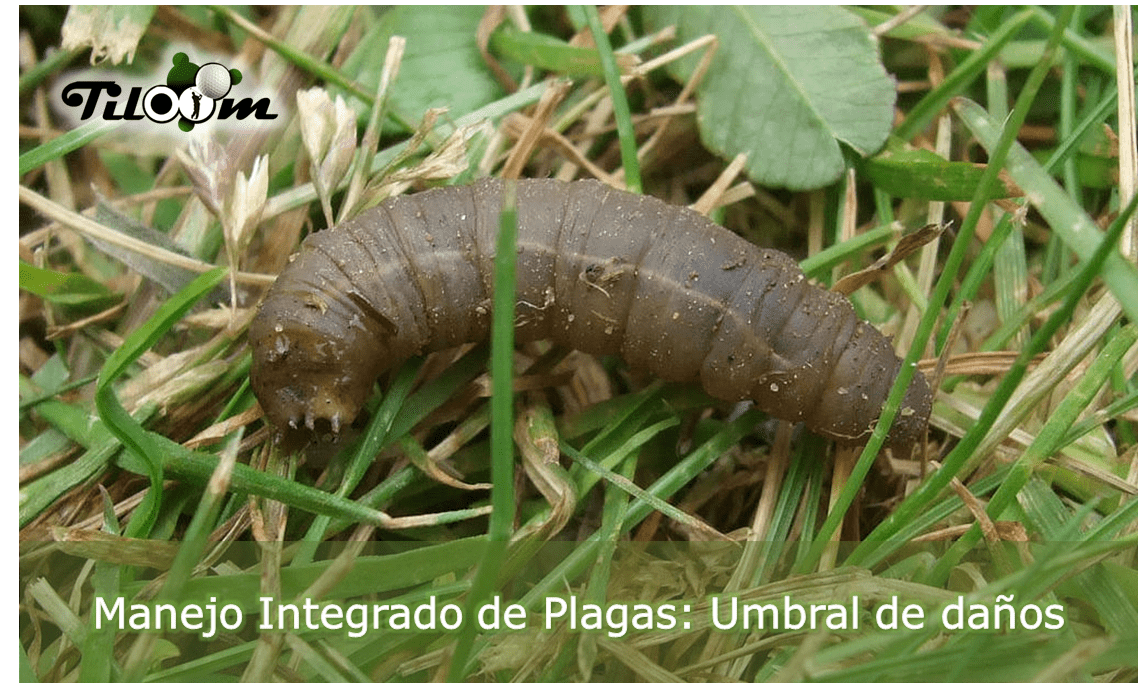🌟 Improve your sports field with a expert audit.

Share on RRSS

One of the most complicated questions for management Integrated pest management is to define the Damage ThresholdWhen is the time to act?
Although complete knowledge of the field is impossible, it is possible to bring together all the information available to define management systems and methods. The key is to develop dynamic systems that can be modified as the field develops. This is why a damage threshold is determined.

The damage threshold benchmark for turfgrass is a tricky one to set, but it is the sweet spot between the appearance the user can tolerate and the expense to the property. How much damage can be expected? weed I tolerate on a street? o How many nematodes? or how many larvae? There are really few studies done defining where the limit is for the variables, so the experience of the maintenance team is vital for integrated pest management. They are the ones who must define when a pest can do serious damage to the turf. Gordon Witteveen, y Michael Bavier place great emphasis on their Practical guide for the management of grasses on golf courses, relating experience and daily observation with the appropriate management. Leaving behind the indiscriminate use of phytosanitary products.
Ricardo Llorca Mata, Head Greenkeeper at Club de Golf Escorpión commented at the 40th annual Greenkeepers Congress that the use of monitoring tools such as POGO o TDR helped him to know the state of the turf. Not only because he knew the humidity or the salinity from the ground. Frequent walks in the countryside allowed him to keep an eye on their progress and to detect signs of illness at a very early stage.

Today, the use of high doses of fungicides should only have a curative use at times when the disease is advanced. It no longer makes sense to use such high doses when preventive passes are being made. And such preventive passes could be reduced if correlations between disease harassment and cultural work were studied. Often the damage is related to:
Nowadays pest modelling is a reality that is not used as much as it should be. And its use is highly recommended as it alerts when all the ingredients are in place for a pest to explode. With this information, action can be much more specific, avoiding the use of broad-spectrum pesticides. One of the most important dangers is the lack of rotation between active ingredients in pesticides. The simplest organisms have many tools to develop resistance to active substances in the very short term.

To avoid such resistance, biotic regulation seems to be the way forward for the technology. This method tries to stimulate competition between beneficial and pathogenic micro-organisms. With the balance created, no one pest would stand out from another and the need for pesticides would be drastically reduced.
In addition to that, the occurrence of pests generates genetically induced resistance in many grass species. This acts as a kind of vaccine. Agronomist Hermes Aramendiz-Tatis, a professor at the University of Cordoba, explains how the Genetics of plant resistance and how the relationship between host (the pathogen) and host (the plant).
Nor can we forget:

It is unrealistic to invest in having an undamaged lawn made by mushrooms bacteria or insects. And it is logical that more representative areas have lower thresholds than less important areas.
As he asserts Peter Landschoot, Professor at Pennsylvania State University. Nor it is the same thing to tolerate grass rust that we know will not cause major damage as Pythium that can wreak havoc on the surface.

We appreciate your interest in us, so we leave you this form so that you can subscribe and have priority access to our exclusive promotions and offersideal for saving money on your purchases and keeping your sports and agricultural fields at the forefront!
In addition, we will keep you informed about the LATEST NEWS in Greens and Agriculture with the latest entries from our Greenkeepedia and Agrikipediaincluding innovations, events and interviews with experts.
Click to subscribe now and get exclusive access!